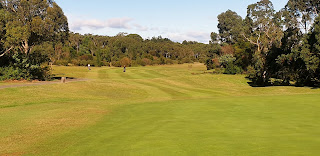I find it interesting that some countries and US states are easing pandemic restrictions while they are still experiencing more than a thousand new cases and more than a hundred new deaths each day.
 |
| Dawn today (courtesy Julie) |
Even Germany, which has been an exemplar of good management within Europe, has seen its community transmission rate kick back up to 1.0 (each infected person infects one other) after being at 0.7 earlier in the month before restrictions were eased. This may not seem to be much, but as Angela Merkel has pointed out, a rate of 1.1 will mean that the country will reach its healthcare system limit in October, 1.2 in July and 1.3 in June!
The pressure on governments to ease restrictions must be immense, particularly in countries like the US where social compliance and respect for government is less. The demonstrations in the US show that many people think their state governments are moving too slowly to ease those restrictions.
 |
| Dawn today (courtesy Julie) |
However, what is happening in Germany makes me think that those US states, along with a number of countries, really are easing their restrictions too fast and that there will be consequences -- more deaths and/or reintroduced restrictions.
I have been wondering whether my hip injury problem may be related to running too slowly. It makes sense that our posture and the forces imposed on joints, varies with our running speed. In my mid-20s, I had a persistent knee injury that a physiotherapist advised might be caused by running too slowly. For a month or two, I had been introducing my then spouse to longer distance running, something that wasn't common for females at that time (she was already a competent middle distance athlete), and we were running slowly. Sure enough, when I cut out the slow running the knee injury almost miraculously disappeared.
 |
| Dawn today (courtesy Julie) |
Of course, these days I can't avoid slow running. It always takes four to five kilometres to warm up and run at any kind of speed, and if my back is playing up, even further. Nevertheless, on
this morning's 9km run, after the warm-up kilometres, and I had loosened up, I could feel my running form improved and the hip pain diminish. It wasn't gone, but it wasn't as obvious and I was running more freely. So, maybe the answer to my current problem is to just suffer through the warm-up and then continue on, rather than stick to just six kilometres a day.
I'm also conscious, however, that injuries can often seem less of a problem once you have warmed up (Achilles tendon injuries being a good example), but then stiffen up after a run and are even more painful when running the next day. Too slow, or too fast? The answer will probably become obvious over the next week.





















